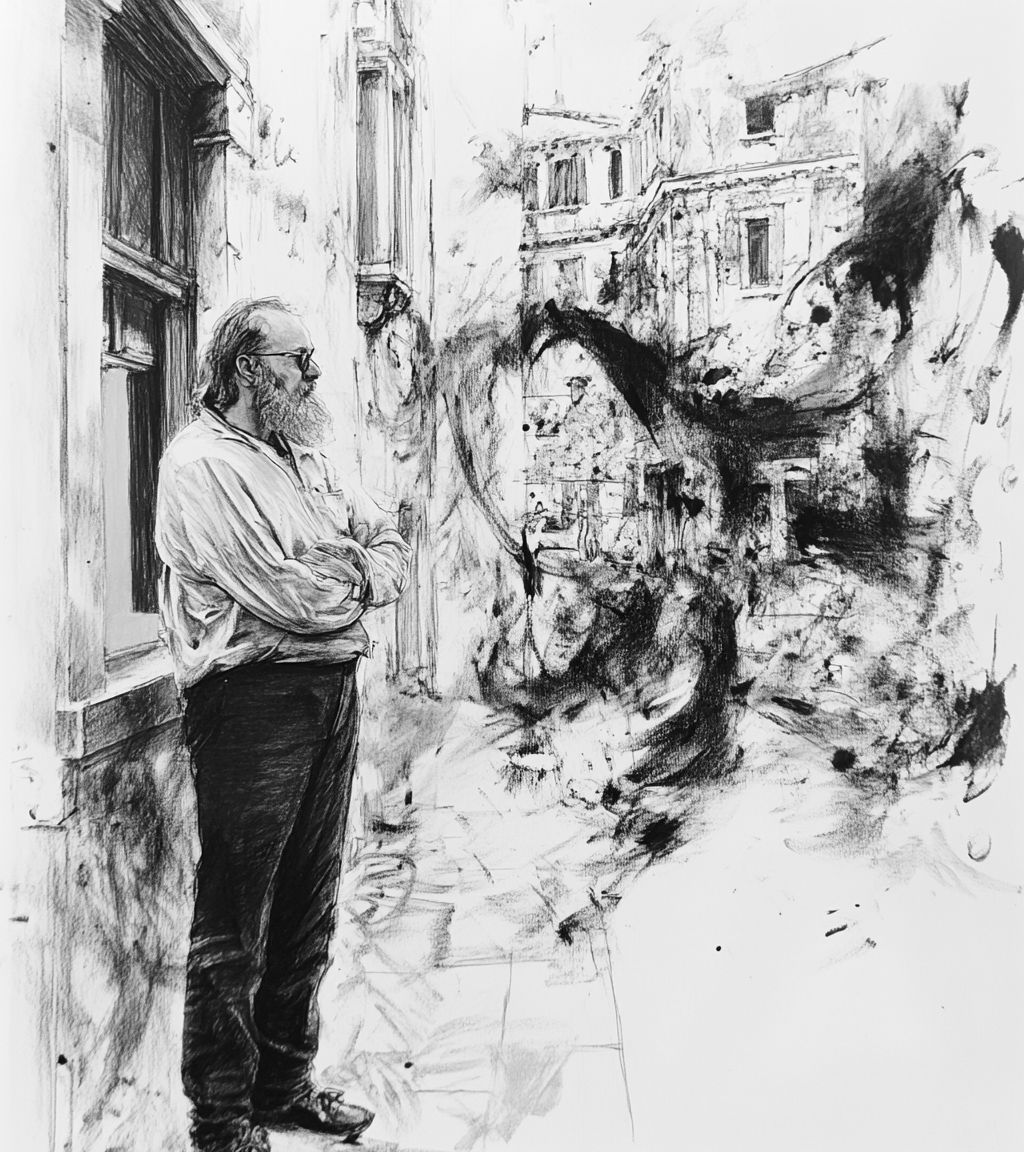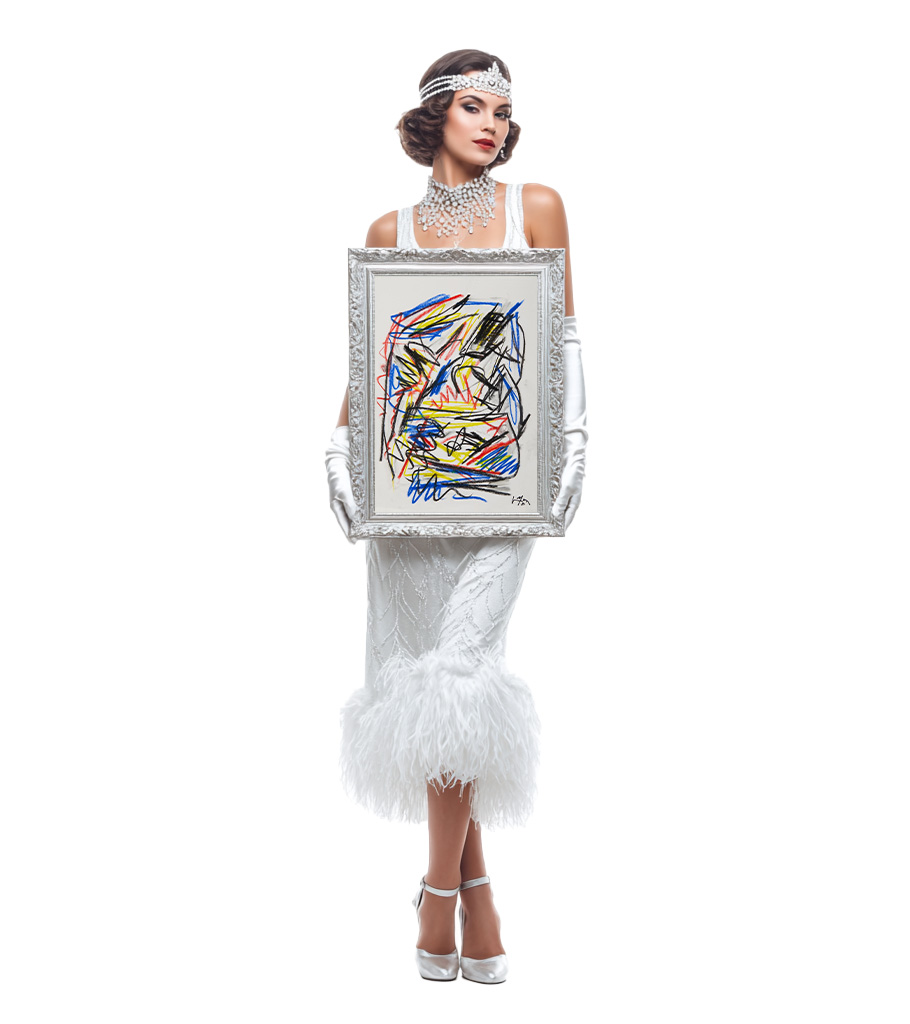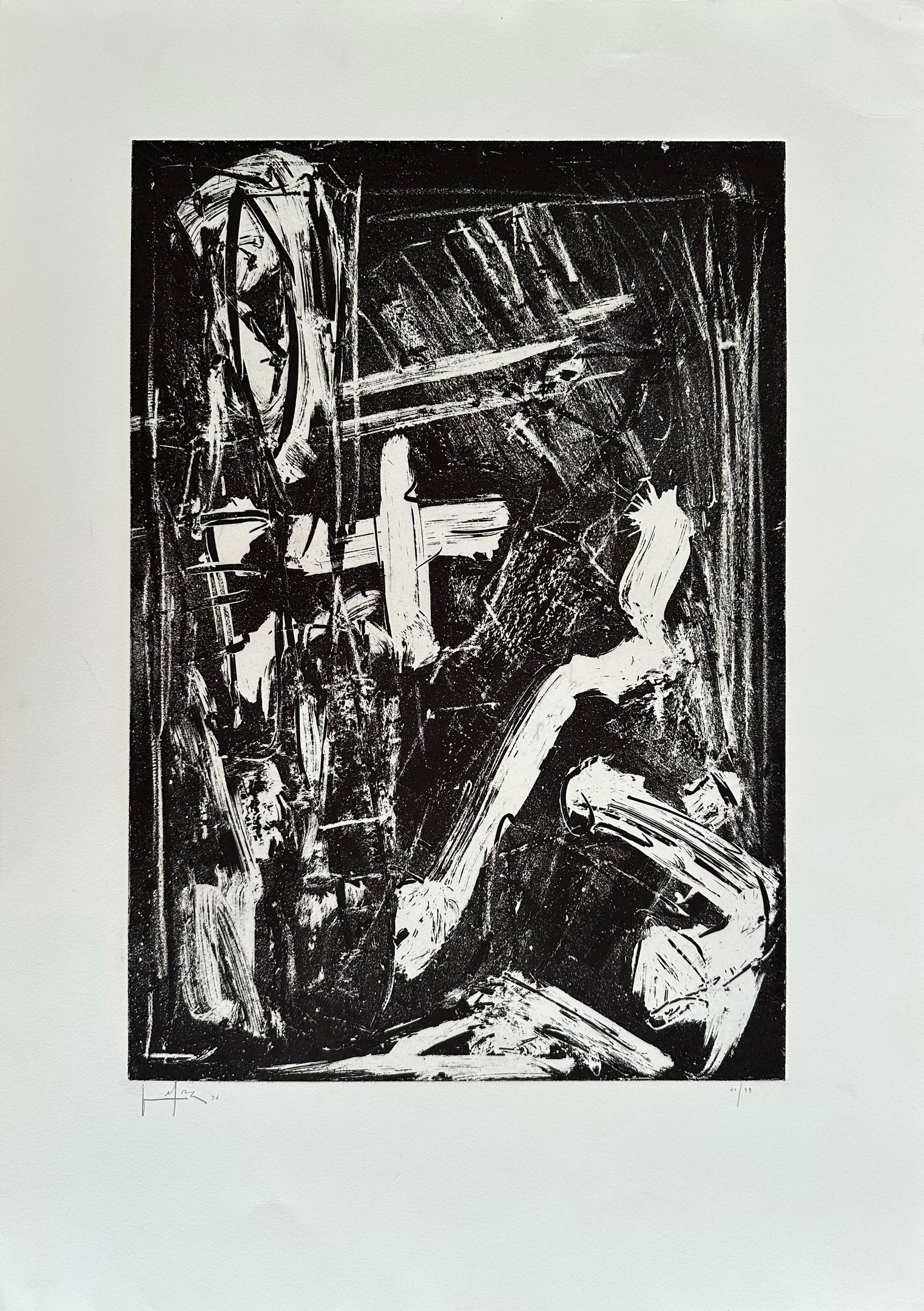
Emilio Vedova
Emilio Vedova was born into a working-class family. Largely self-taught, he began painting while working as a laborer and restorer. Vedova helped establish the Fronte Nuovo delle Arti, an influential collective in postwar Italian art. Vedova’s early participation in the Venice Biennale in 1948 marked the beginning of a long and significant presence in the international art scene.
Vedova’s work is associated with the Italian Arte Informale movement and features a dynamic, gestural abstraction. His early black-and-white compositions evolved into energetic canvases filled with violent brushwork, scratches, and splattered paint. He often addressed political and existential themes through non-figurative means. His Plurimi series (1961–1963) consisted of painted, shaped panels that could be installed in variable formations, creating immersive environments. Vedova’s later works further pushed the boundaries of movement, color, and form.
Vedova represented Italy multiple times at the Venice Biennale, earning the Grand Prize for Painting in 1960. He also participated in Documenta. Major retrospectives have been held at Kunsthalle Darmstadt, Palazzo Grassi (Venice), and Palazzo Reale (Milan). More recent exhibitions include Emilio Vedova: Historical Survey at Galerie Thaddaeus Ropac (Paris, 2018), Rivoluzione Vedova at the M9 Museum (2023), and shows at the Museo Novecento (Florence), Centre Pompidou-Metz, and Museum Küppersmühle (Duisburg). His legacy is preserved by the Fondazione Emilio e Annabianca Vedova in Venice.
Collected by major institutions and notable private collectors:
— Tate— Guggenheim Museum
— Fondazione Vedova
Notable sales and auction records:
— Ciclo 61/62 N2, EUR 776,7 thousand at Christie's, Milan, 2008— Ciclo '61 n. 11, EUR 730,8 thousand at Christie's, Milan, 2008
— Documento 2 - Aggressività, EUR 622,7 thousand at Christie's, Milan, 2007
Artworks and Paintings
Biography and Artistic Career Highlights
Emilio Vedova was born on August 9, 1919, in Venice, into a working-class family. His childhood unfolded among the narrow streets and canals of a city rich in cultural traditions but poor in opportunities for ordinary people. Vedova never received systematic artistic training; however, from an early age he drew and copied the works of old masters that he saw in Venetian churches and museums.
1936–1939 — worked in art workshops, learning the basics of painting and drawing. He began creating his first independent works, which revealed the influence of Expressionism and traditional Italian painting.
1942 — joined the «Corrente» art group in Milan.
1946 — became one of the founders of the group «New Section of the Artistic Front» (Nuova Secessione Artistica Italiana), and also signed the manifesto «Front of New Art».
1948 — participated in the Venice Biennale, where his works were noted as examples of new, expressive art.
1950 — took part in the creation of the group «Front of New Art» and later the association «Avant-Garde Front». His painting increasingly acquired an energetic, gestural character.
1951 — joined the movement «Fronte Nuovo delle Arti» and soon became one of the leaders of Italian Abstract Expressionism.
1952 — signed the manifesto of the «Spazialismo» group, which proclaimed the idea of breaking with the traditional space of painting.
1950s–1960s — achieved international recognition, with exhibitions in Europe and the United States. His dynamic canvases, with their powerful brushstrokes, came to symbolize the drama and chaos of the modern world.
1958 — solo exhibition in New York, which brought him fame beyond Italy.
1960s — created the «Plurimi» series, in which he produced multi-part pictorial constructions extending beyond the traditional canvas.
1966 — participated in the Venice Biennale, where he was awarded the Grand Prize for Painting.
1970s — taught at the Academies of Fine Arts in Venice and Salzburg, influencing a new generation of artists.
1980s — produced new cycles of works in which the energy of the brushstroke was combined with philosophical reflections on the fate of the world.
1997 — a major retrospective in Venice confirmed his status as one of the foremost Italian masters of the 20th century.
On October 25, 2006, Emilio Vedova died in Venice. His legacy became a symbol of Italian Abstract Expressionism and an example of art inseparably linked to the history and tragedies of the 20th century.


